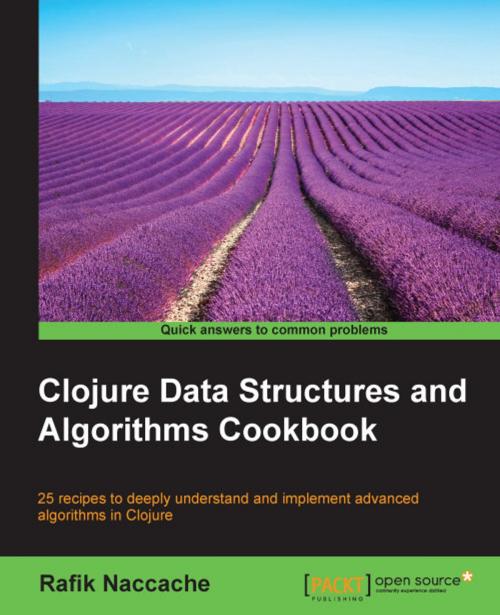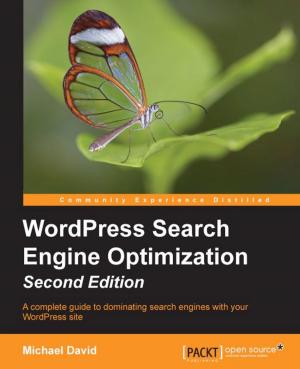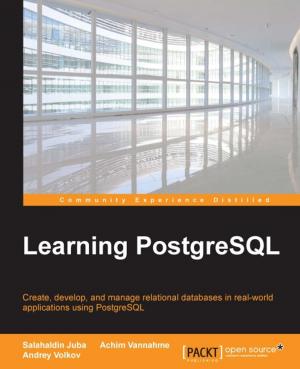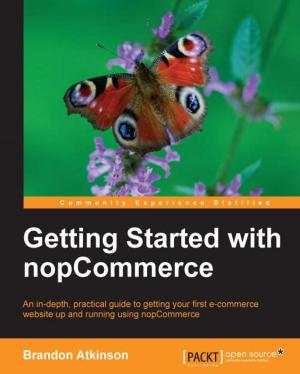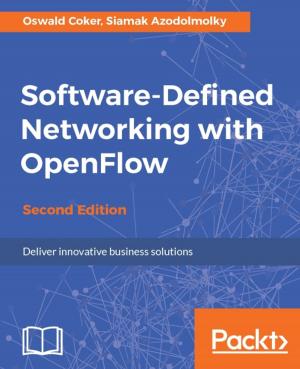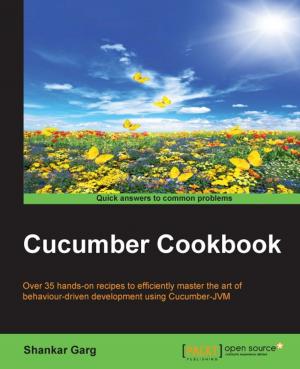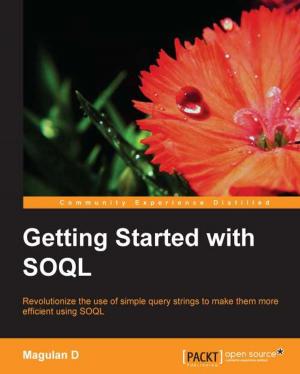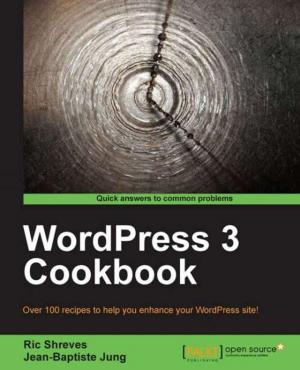Clojure Data Structures and Algorithms Cookbook
Nonfiction, Computers, Database Management, Programming| Author: | Rafik Naccache | ISBN: | 9781785287824 |
| Publisher: | Packt Publishing | Publication: | August 19, 2015 |
| Imprint: | Packt Publishing | Language: | English |
| Author: | Rafik Naccache |
| ISBN: | 9781785287824 |
| Publisher: | Packt Publishing |
| Publication: | August 19, 2015 |
| Imprint: | Packt Publishing |
| Language: | English |
25 recipes to deeply understand and implement advanced algorithms in Clojure
About This Book
- Explore various advanced algorithms and learn how they are used to address many real-world computing challenges
- Construct elegant solutions using impressive techniques including zippers, parsing, and pattern matching
- Solve complex problems by adopting innovative approaches such as logic or asynchronous programming
In Detail
Data-structures and algorithms often cross your path when you compress files, compile programs, access databases, or simply use your favourite text editor. Understanding and implementing them can be daunting. Curious learners and industrial developers can find these complex, especially if they focus on the detailed implementation of these data structures.
Clojure is a highly pragmatic and expressive language with efficient and easy data manipulation capabilities. As such, it is great for implementing these algorithms. By abstracting away a great share of the unnecessary complexity resulting from implementation, Clojure and its contrib libraries will help you address various algorithmic challenges, making your data exploration both profitable and enjoyable.
Through 25 recipes, you'll explore advanced algorithms and data-structures, well served by a sound Clojure implementation.
This book opens with an exploration of alternative uses of the array data-structure, covering LZ77 compression, drawing fractals using Pascal's triangles, simulating a multi-threaded program execution, and implementing a call-stack winding and un-winding operations.
The book elaborates on linked lists, showing you how to construct doubly linked ones, speed up search times over the elements of such structures, use a linked-list as the foundation of a shift-reduce parser, and implement an immutable linked-list using skew binary numbers representation.
After that, the tree data-structure is explored, focusing on building self-balancing Splay Trees, designing a B-Tree backing-up an efficient key-value data-store, constructing an undo capable Rope, and showing how Tries can make for an auto-completing facility.
Next, some optimization and machine learning techniques are discussed, namely for building a co-occurrence-based recommendation engine, using branch-and-bound to optimize integral cost and profit problems, using Dijkstra's algorithm to determine optimal paths and summarizing texts using the LexRank algorithm.
Particular attention is given to logic programming, you will learn to use this to discover interesting relations between social website data, by designing a simple type inferencer for a mini Java-like language, and by building a simple checkers game engine.
Asynchronous programming will be addressed and you will design a concurrent web-crawler, an interactive HTML5 game, and an online taxi booking platform.
Finally, you'll explore advanced cases for higher order functions in Clojure while implementing a recursive descent parser using efficient mutual resucrsion, devising a mini resusable firewall simulator thanks to Clojure 1.7 new tansducers feature or building a simple unification engine with the help of Continuation Passing Style.
What You Will Learn
- Explore alternative uses of classical data-structures like arrays and linked-lists
- Discover advanced types of tree data-structures
- Explore advanced machine learning and optimization techniques
- Utilise powerful Clojure libraries, such as Instaparse for parsing, core.match for pattern matching, clojure.zip for zippers, and clojure.matrix for matrix operations
- Learn logic programming through the usage of the library core.logic
- Master asynchronous programming using the core.async library
- See the transducers in action while resolving real-world use-cases
25 recipes to deeply understand and implement advanced algorithms in Clojure
About This Book
- Explore various advanced algorithms and learn how they are used to address many real-world computing challenges
- Construct elegant solutions using impressive techniques including zippers, parsing, and pattern matching
- Solve complex problems by adopting innovative approaches such as logic or asynchronous programming
In Detail
Data-structures and algorithms often cross your path when you compress files, compile programs, access databases, or simply use your favourite text editor. Understanding and implementing them can be daunting. Curious learners and industrial developers can find these complex, especially if they focus on the detailed implementation of these data structures.
Clojure is a highly pragmatic and expressive language with efficient and easy data manipulation capabilities. As such, it is great for implementing these algorithms. By abstracting away a great share of the unnecessary complexity resulting from implementation, Clojure and its contrib libraries will help you address various algorithmic challenges, making your data exploration both profitable and enjoyable.
Through 25 recipes, you'll explore advanced algorithms and data-structures, well served by a sound Clojure implementation.
This book opens with an exploration of alternative uses of the array data-structure, covering LZ77 compression, drawing fractals using Pascal's triangles, simulating a multi-threaded program execution, and implementing a call-stack winding and un-winding operations.
The book elaborates on linked lists, showing you how to construct doubly linked ones, speed up search times over the elements of such structures, use a linked-list as the foundation of a shift-reduce parser, and implement an immutable linked-list using skew binary numbers representation.
After that, the tree data-structure is explored, focusing on building self-balancing Splay Trees, designing a B-Tree backing-up an efficient key-value data-store, constructing an undo capable Rope, and showing how Tries can make for an auto-completing facility.
Next, some optimization and machine learning techniques are discussed, namely for building a co-occurrence-based recommendation engine, using branch-and-bound to optimize integral cost and profit problems, using Dijkstra's algorithm to determine optimal paths and summarizing texts using the LexRank algorithm.
Particular attention is given to logic programming, you will learn to use this to discover interesting relations between social website data, by designing a simple type inferencer for a mini Java-like language, and by building a simple checkers game engine.
Asynchronous programming will be addressed and you will design a concurrent web-crawler, an interactive HTML5 game, and an online taxi booking platform.
Finally, you'll explore advanced cases for higher order functions in Clojure while implementing a recursive descent parser using efficient mutual resucrsion, devising a mini resusable firewall simulator thanks to Clojure 1.7 new tansducers feature or building a simple unification engine with the help of Continuation Passing Style.
What You Will Learn
- Explore alternative uses of classical data-structures like arrays and linked-lists
- Discover advanced types of tree data-structures
- Explore advanced machine learning and optimization techniques
- Utilise powerful Clojure libraries, such as Instaparse for parsing, core.match for pattern matching, clojure.zip for zippers, and clojure.matrix for matrix operations
- Learn logic programming through the usage of the library core.logic
- Master asynchronous programming using the core.async library
- See the transducers in action while resolving real-world use-cases
